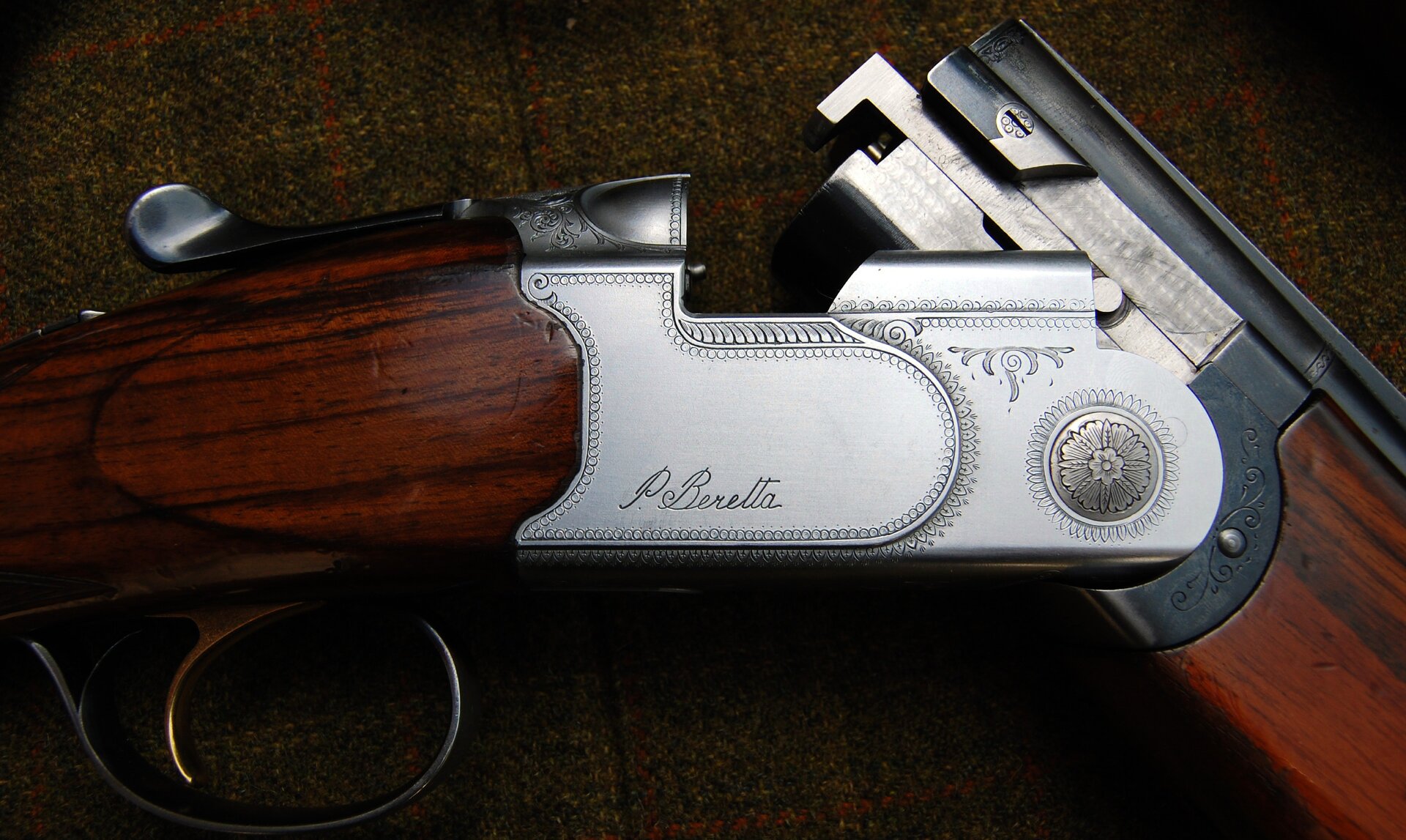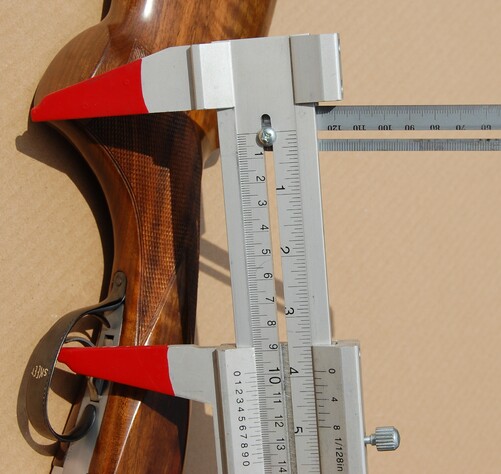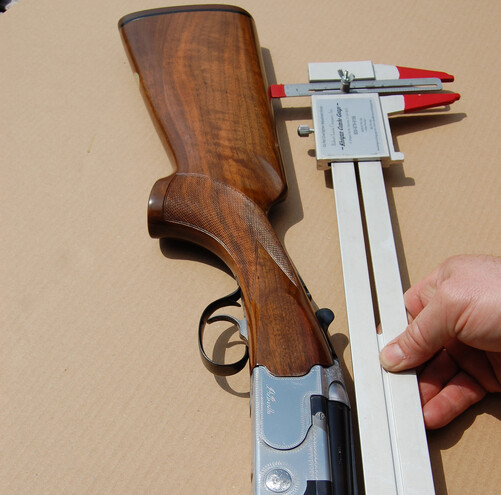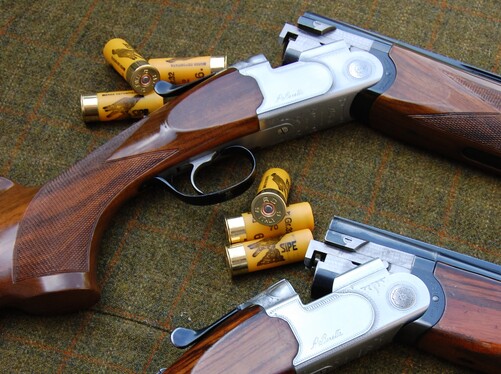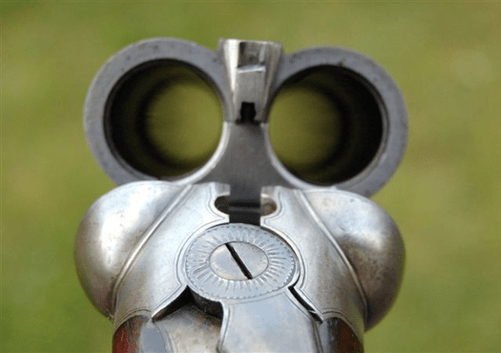As Mike Smith discusses, modern methods of production now bring that quality shotgun within the reach of many more shooters. Options to build precisely what you want in to a top end gun opens up the prospect of tapping into another level of gun fitting – whole gun fitting offers to tune-in to individual shooting potential by advancing fitting toward a deeper understanding of exactly what it is that a gun actually contributes to the process of shooting shot after shot.
Whole-gun fitting: unlocking potential
It’s taken a bit time but today there’s something of a revolution underway in gun making. Computer aided design and production control technology is now contributing efficiencies and savings to gun making that even a few years ago would have been thought unimaginable.
There will always be a part for traditional gunsmithing of course, but as technology is increasingly absorbed and adapted to the making of high-end shotguns there is in turn a direct consequence: that is, in very real terms, owning a genuinely bespoke shotgun, precision machined and bench finished, becomes ever more realisable.
What the use of modern technology means, combined with traditional hand finishing and regulation, is that features on shotguns once solely the preserve of the purely hand made item become accessible to many more shooters. This is an exciting prospect, for in the crafting a quality shotgun there is now a capability to customise those specific features that can help unlock shooting potential.
Technology-driven changes in gun making will also influence the process of gun fitting. The gun fitter has always acted as an enabling link between the performance aspirations of the client and the work of the gun maker, and just as high-tech input sweeps through gun making so the options and flexibility afforded to modern gun fitting can be fully realised.
Whole-gun fitting – toward an individual meaning
Our contemporary approach to fitting shotguns now has the capacity to be much more innovative. It is a restrictive notion to assume that our entire scope for fitting, with the breadth of opportunity that cutting-edge production methods are beginning to bring on-line, should be about little more than an adherence to a fixed historical formula; a somewhat static and limiting mind set that merely assumes, when the formula is applied, will work in the same way for everyone.
There are core principles to gun fitting, of course – irreducible truisms, proven and thoroughly established through long practise and experience – but within the act of connecting with a target and taking a shot there is now much to suggest that bits of the shooting process are subtly unique to each and every one of us. Competent gun fitting can incorporate much of this individual meaning, and, furthermore, will confidently and accurately contribute guidance as to how a gun is best put together and finished to both inspire and sustain shooting success.
Working shallow and deep
Technological innovation in gun making leads us toward more choice in the type and form of features that can be incorporated within a shotgun’s build. Now we might usefully progress fitting to look at how the whole-gun in its stock-to-barrel entirety can benefit overall gun-fit. This approach explores how each of the relevant components of a shotgun can contribute to performance in the hands of the individual user.
Whole-gun fitting pays a great deal of attention to how the individual actually shoots: assessing the dynamic link between shotgun and shooter, the base-line mechanics of contact, movement and technique. As a procedure this is a gun fitting approach that objectively sets out to answer the core question of how to provision a shotgun in ways that will positively influence, and even enhance, the very act of shooting it.
This fitting model aims to tap into a highly individualised approach to gun fitting, guiding a gun’s build toward an acknowledged shooting advantage. Sequential fitting stages begin with the most fundamental (shallow) principles of fit, progressing to those more advanced (deep) and closely aligned to an individual’s specific preferences and requirements.
Whilst more general elements of the whole-gun fit can be applied to all guns, the more advanced aspects may only be incorporated most assuredly through a maker’s ability to customise specific stock, action and barrel features. Ultimately, in this modern interpretation of the fitter’s role, the objective is to influence a shotgun’s build by providing measurements and technical descriptions directly communicated in trade-terms to the gun-maker’s workshop.
Contact, feedback and vision
Some of the key processes in whole-gun fitting look at contact, feedback, and vision.
Contact focuses on ‘touch points’: areas where there is physical contact with a shotgun. These points represent ‘control surfaces’ to which fitting can have a significant influence in how a gun feels and responds in use. How components of the stock, fore-end and trigger are shaped and textured are imperatives to confident handling, control and consistency.
As a shotgun moves to arrive at a point when the trigger is pulled, this is an action and re-action situation rich in feedback. Much of this feedback relates to a gun moving: gathering momentum, dynamically responding and adjusting to situational stimulus. Quantifiable values relating to balance, triggerpulls and other kinaesthetic properties supply much to the feedback element of whole-gun fit.
Vision is an essential part of shotgun shooting performance. How a gun might capture, hold and build vision is of great importance. Our eyes enable vision, but it is the eyes combining with the gun and looking to a moving and distant target that initiate shooting vision. Rib design and sighting features provide for barrel ‘furniture’ that activate, promote and enhance shooting vision.
A new chapter
In the popular imagination you might be forgiven for thinking that the definitive work on gun fitting was written long ago; an acquired body of knowledge laid down in generations past when the craft of traditional gun making was at its absolute height. To deviate from the reverence of such historical canon might seem beyond any logical reason.
We have in fact had to move on a good deal since then, to a different era, with greater demands on performance and different views on fitting – in other words, progress. And whilst historical opinion might have delivered gainfully to us the opening pages on the fitting of a shotgun, in reality there are entire chapters as yet to be written.
A well-fitted shotgun, the product of a fine maker, and one increasingly accessible in cost terms, will ease through each step of the shooting process: mounting well, moving better; potently rooting itself to the engagement of a shot. And as the process of that shot builds toward its terminus, the finger tightening to a shaped, hand-tuned trigger, there is but one thing left to fill the moment, flooding the senses between expectation and success…complete shooting satisfaction.
Enjoyed this article and want to know more?
Why not contact us at Glenzier Sporting. Mike Smith has run the Whithorn shooting ground for 20 years and offers teaching lessons and gun fitting.
